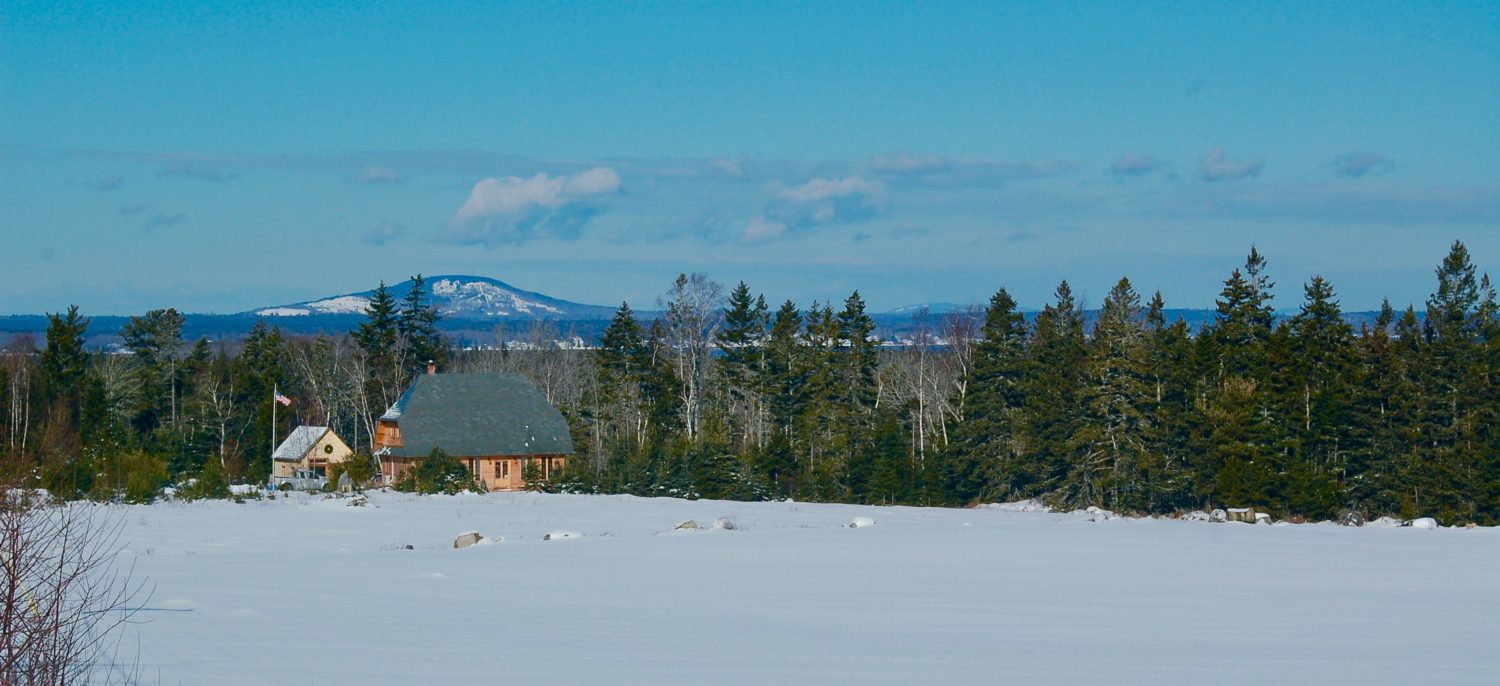 Welcome to Village Green Timber Frames. From a base on the Blue Hill Peninsula in downeast Maine, we build and restore traditional timber frame homes and outbuildings.
Welcome to Village Green Timber Frames. From a base on the Blue Hill Peninsula in downeast Maine, we build and restore traditional timber frame homes and outbuildings.
When it comes to building we take the long view. We all need shelter. For most of history, people everywhere built houses with local natural materials, mainly wood, stone, and earth. Over time, each region developed its own vernacular in response to available materials, climate and weather. Local craftsmen relied on skills passed down from one generation to the next.
 In most of the forested regions of the world, timber frames formed the structure for houses, barns, and places of worship. Over the centuries these buildings proved their durability and beauty. A well-constructed timber framed building can easily last 500 years. Many of these historic structures remain among the most beautiful wood buildings in the world.
In most of the forested regions of the world, timber frames formed the structure for houses, barns, and places of worship. Over the centuries these buildings proved their durability and beauty. A well-constructed timber framed building can easily last 500 years. Many of these historic structures remain among the most beautiful wood buildings in the world.
We strive to meet the highest standards of those traditions, designing and building custom homes that are beautiful, durable, comfortable, and as organic as possible. Whenever possible we choose local, natural materials that are at or close to their natural state: field stone for our foundations; timbers cut or hewn from trees from the local forest; clay and sand for our floors; cedar, spruce, or pine for boards, shingles, and clapboards. The result is a home that seems as if it has grown out of the land and that delights the senses because the textures, surfaces and hues are the ones our bodies and senses evolved with.
At its best, our work is a successful marriage of the the raw materials that define our local landscape—trees, field stone, clay, and sand—and the centuries-long traditions of craftsmen and craftswomen shaping and assembling those materials into beautiful, durable structures. These are the crafts of the joiner, the mason, the carpenter, the plasterer.
But we aren’t satisfied to simply build replicas of historic buildings. These are living traditions that belong fully in the center of modern building practices. The older buildings, after all, used enormous resources for heating and cooking, particularly in colder climates. A typical 19th-century farmhouse in Maine used about 20 cords of wood each winter. That’s unacceptable for the twenty-first century. Using a combination of passive solar design, abundant insulation, and thermal mass inside the building, our homes can be comfortably heated with one to two cords of wood per year. And because solar and radiant heat are the most pleasant kinds of heat, our clients tell as they’ve never been in a home as comfortable as ours, regardless of the time of year or outdoor temperature.

207/460-9611 jim@villagegreentimberframes.com
